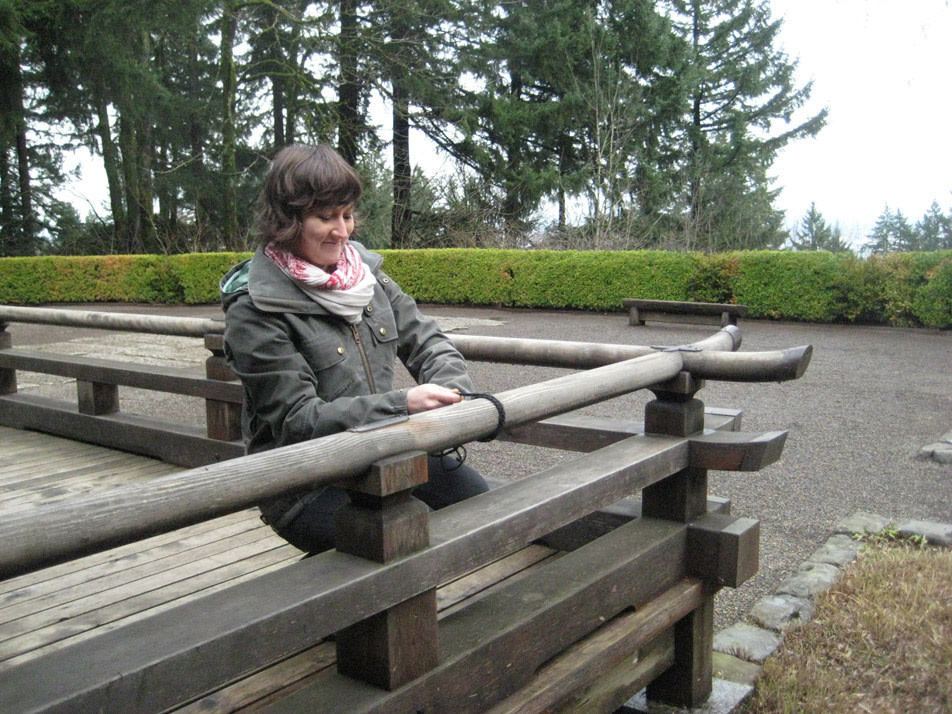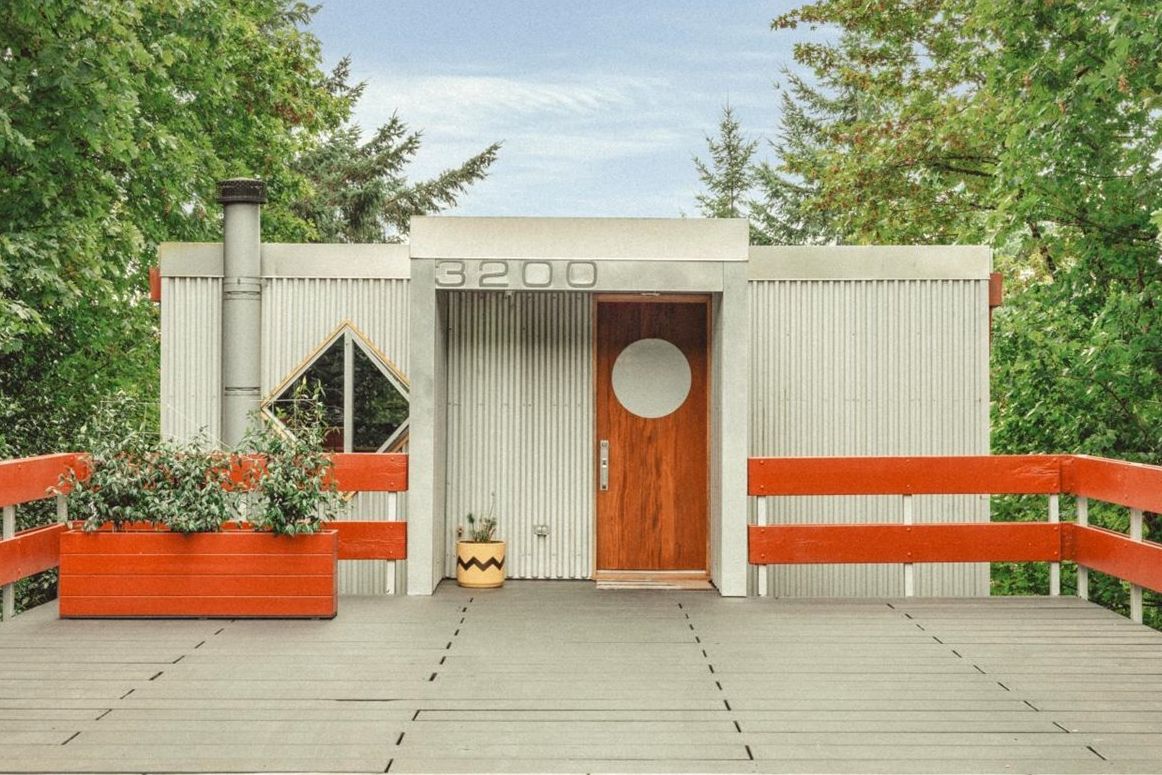Tying the Knot

After more than a year of working at the Portland Japanese Garden, assistant gardener Desirae Williams is still learning how to tie a knot.
Image: Kristin Belz
The Portland Japanese Garden has been a big deal in Portland ever since its conception in 1963. Though it didn't open its gates to the public until 1967, it attracted more than 200,000 visitors last year alone. At age 50, the garden is in its maintenance, not planting, stage now, but every day brings new discoveries and every day the garden is different. And at 50 years old, it is still young. The Japanese philosophy is to take a long term view of life and the world, and while 50 is middle age for us human folk, for a tree, or a garden, it is no such thing.
Being in the garden allows a person to experience harmony and balance achieved not through symmetry but asymmetry, through careful, respectful design, attention to the nuances of a place, and sensitivity to individual materials used within the traditions of centuries. The materials you'll find in an Japanese garden are few, as Garden Curator Sadafumi Uchiyama points out: they've used "stone, plant, dirt, water for thousands of years, for good reasons. Each garden has its own life, and teaches us."
Spending time at the Japanese garden is a lesson in watching, waiting, looking and listening. Uchiyama says that after we plant in the garden, "the garden is telling us what to do. The plants are like kids... we have to make a little more effort to listen," though, because if the plants are unhappy where we've planted them, "they can't just run away." And unlike children, they can't learn to use their words. But we can learn to listen and look so that we understand what they are telling us.
Those who work at the Portland Japanese Garden like to say that "the garden is at its best every day." It sounds a bit like the children of Lake Woebegone, but it is true. Each season reveals something new different. We're in late winter now, a great time to see the structure of the garden – and early signs of spring.
In Japanese garden design, there are no single answers, but there are principles, of both philosophy and design, which seem to rise together to the level of the spiritual, in the most humanistic and open-minded way. I was lucky enough to take a long tour of the garden with Uchiyama and two of the younger gardeners on his six person staff, Adam Hart and Desirae Williams. "Sada," as they call him, has worked there for five years, Adam for about the same, and "Desi" for only a year or two. They are all still learning, every day. As Sada says, in the Japanese view of things, "any job takes almost your entire life to learn."
To spend two days learning about building bamboo fencing, check out their upcoming workshop; classes fill up quickly, so reserve ahead.
Bamboo Fence-Building Workshop
Saturday - Sunday April 13-14, 2013
Reservations open March 19 at 8 a.m.
$150 members/$175 non-members
Garden Curator Sadafumi Uchiyama presents this workshop with staff gardeners. The workshop begins with a walk around the Garden and a review of the use and placement of bamboo fences. There will be a discussion on types and styles as well as a review of the history and evolution of Japanese bamboo fences. Day one includes lectures and demonstrations, with hands-on tool practice and knot-tying sessions. On day two, participants apply their learned skills to build a Japanese bamboo fence and will also receive a brief demonstration of fence repair and refurbishing.




